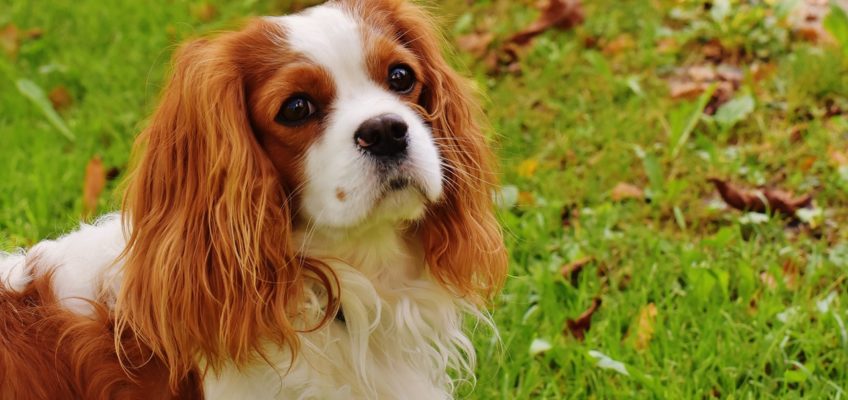10 Dog Coat Types
Whether your dog is an Afghan Hound, a Boston Terrier, a Brittany, or Giant Schnauzer, it possesses a basic canine bone and muscle structure. All dogs are members of the canine species. But since the beginning of time, man has been developing specific characteristics of the domestic dog through controlled breeding. The outcome is 165
American Kennel Club recognized breeds. That doesn’t include mixed breeds, some foreign breeds, rare breeds, and socalled designer dogs (for example the Labradoodle.)
Each breed is unique in its purpose, look, temperament, and, certainly, coat. Moreover, different dogs within the same breed may well show different skin conditions, live in different climates, have different lifestyles (outdoor vs. indoor), and clearly be of different ages and genders.
In general we can put most dogs into one of the ten following categories:
1. SmoothCoated
(Examples include Pointers, Whippets, Boxers, Bulldogs, Chihuahuas, Doberman Pinschers, Boston Terriers):
In general, the smooth coat is clean and odorfree. It is close to the body, and individual hairs are short and stiff. The skin is soft, and it is often sensitive to harsh products, tools and/or equipment. Long periods in cold or extreme weather without coats or jackets are not appropriate for smaller breeds with this coat, and all breeds are more prone to insect bites than those with other coats.
2. ShortCoated
(Examples include Labrador Retrievers, Beagles, Rottweilers, Pugs):
The short coat is short, harsh, and close to the body. It is compatible with a wide variety of weather conditions. Naturally occurring body oils can result in an odor in some breeds, typically hounds. Shedding can be profuse in cooler spring climates.
3. CombinationCoat
(Examples include Brittanys, Golden Retrievers, Tibetan Spaniels, Border Collies):
The combination coat has both a short, smooth coat and a long, silky coat. A very short coat is on the face and front sides of the legs; a short, dense
coat is on the body; and a longer coat is on the tail, the undercarriage, and the rear sides of the legs. Usually breeds with a combination coat have seasonal sheds. The long coat between the feet and the pads is prone to matting and
accumulating dirt and debris, and so needs to be trimmed.
4. DoubleCoated
(Examples include Akitas, German Shepherds, Norwegian Pomeranians, Shelties, Siberian Huskys):
The double coat is straight, and short to moderate in length. It has a harsh outer guard coat, and a dense, thick, soft down
undercoat, which protects against extreme weather. Naturally occurring body oils can result in an odor. Shedding can be profuse during seasonal changes.
5. HeavyCoated
(Examples include Newfoundlands, Chow Chows, Pekingese):
The heavy coat has both long, thick, silky coat and limited short, smooth coat. The long coat must be brushed regularly to prevent mats and tangles that could lead to inflamed and/or infected skin due to lack of air circulation.
The long coat between the toes and the pads is prone to accumulating dirt and debris. Shedding can be profuse during seasonal changes.
6. SilkyCoated
(Examples include all Setters, English Springer Spaniels, Cocker Spaniels, Cavalier King Charles):
The silky coat has both long, silky coat and limited short, smooth coat. A very short, tight coat is on the face and front sides of the legs; a short coat is on the body; and a longer coat is on the tail, the undercarriage, and the rear sides of the legs. The long coat must be brushed regularly to prevent mats and tangles. Usually breeds with a silky coat have seasonal sheds. The long coat between the toes and the pads is prone accumulating dirt and debris.
7. Natural LongHaired
(Examples include Tibetan Terriers, Lhasa Apsos, Shih Tzus, Afghan Hounds, Yorkshire Terriers, Maltese):
The natural longhaired coat is characterized by long coat covering the entire body, and is often considered nonshedding.
Very little trimming is done to prepare breeds with this coat for the show ring. The long coat must be brushed regularly to prevent mats and tangles that could lead to inflamed and/or infected skin due to lack of air circulation. The long coat between the toes and the pads is prone to accumulating dirt and debris. Due to excessive coat, natural longhaired breeds may have eye and ear problems.
8. Curly and Wavy Coated
(Examples include Irish Water Spaniels, Old English Sheepdogs, Poodles, Bichon Frises):
The curly or wavy coat is soft, curly or wavy, and nonshedding. It must be brushed regularly to prevent mats and tangles, and requires regular trimming and bathing to maintain good health and manageability.
9. WireCoated
(Examples include most Terriers, Giant and Standard Schnauzers, WireHaired Dachshunds, Irish Woflhounds):
The wire coat has a soft, dense undercoat that covers much of the body, and wiry guard hair that covers the entire body (face, ears, body, legs, and tail). The longer guard coat must be brushed, bathed, and handplucked or stripped
regularly to prevent mats and tangles. In cooler climates, the shorter undercoat will shed out during seasonal sheds. The long coat between the toes and the pads is prone to matting and accumulating dirt and debris.
10. Corded
(Examples include Pulis, Komondors, Poodles):
The corded coat consists of strong top coat entwining a soft, woolly undercoat. Typically breeds will not develop corded coats until adulthood. With age the coat can grow to the length seen in the show ring. Much care is required for corded coats to be properly nurtured and maintained. Frequent bathing is not advisable since shampoo does not completely rinse out, and the coat is very difficult to dry thoroughly. Avoiding fleas and skin problems is imperative.

